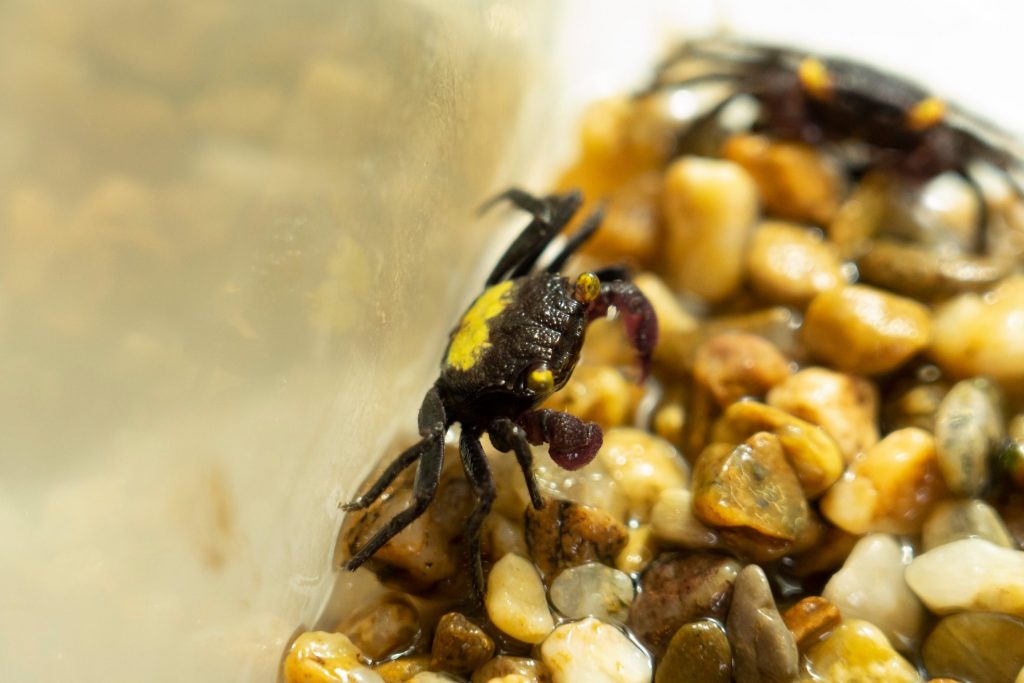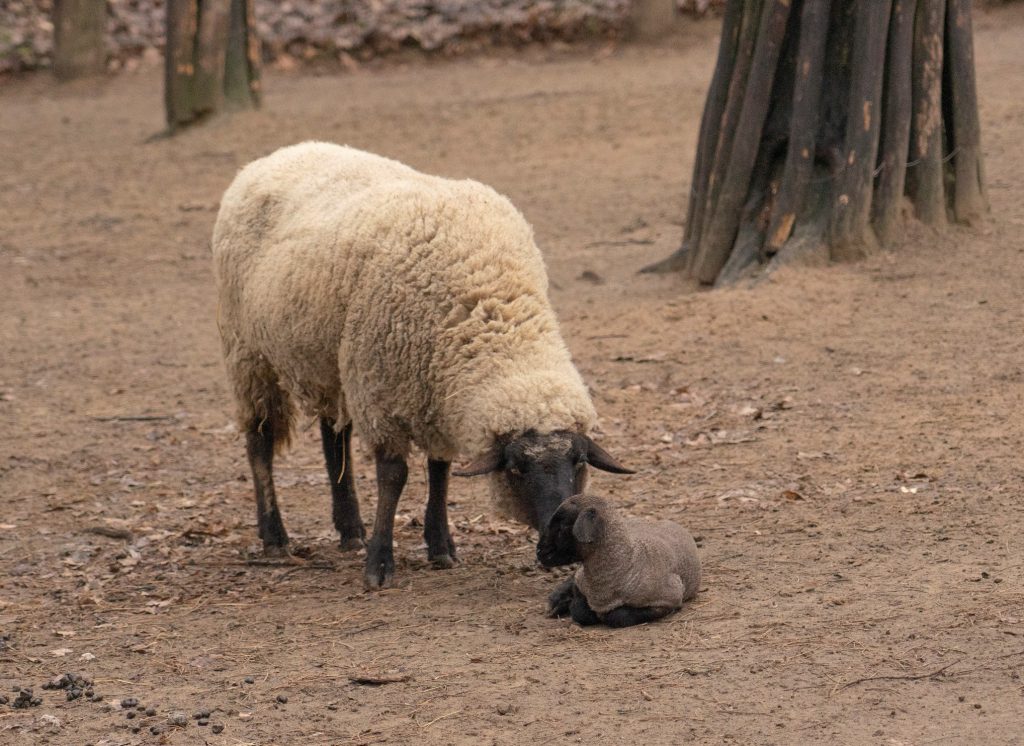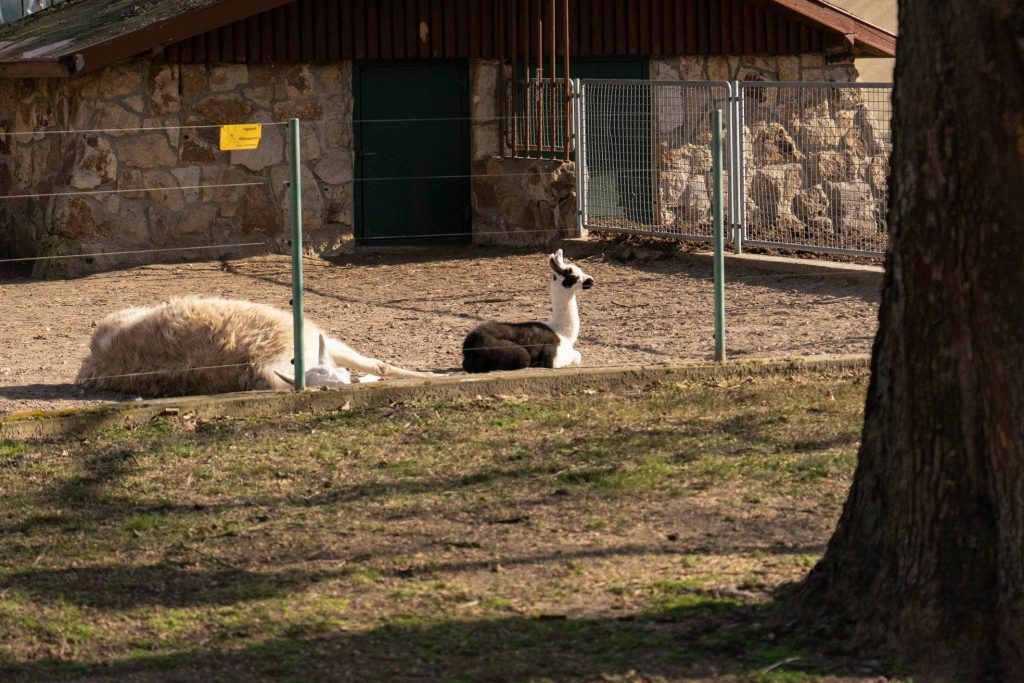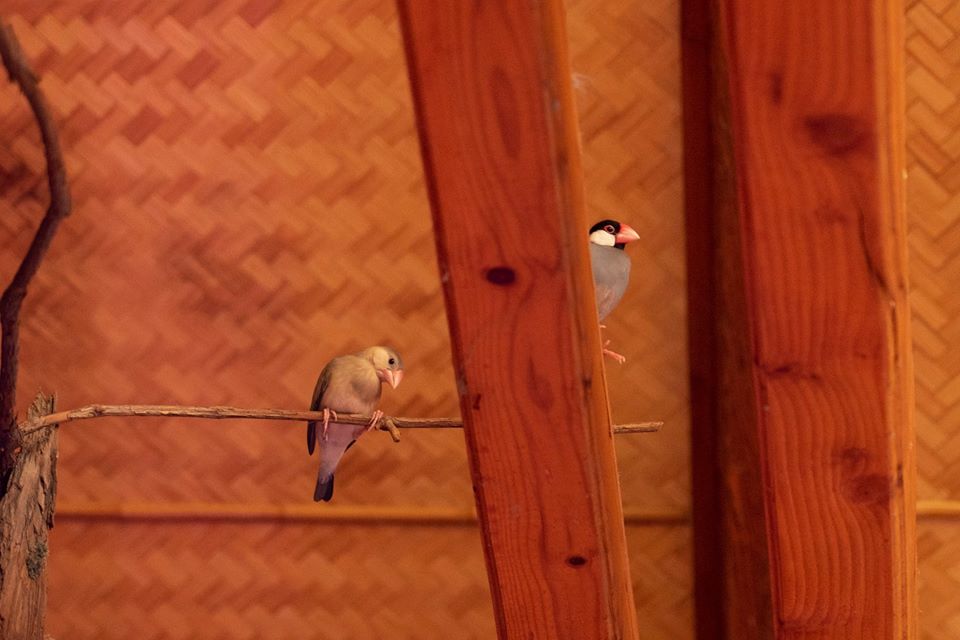No interrupted winter break for Zoo Keepers at Debrecen Zoo! The new arrivals keep coming but such interruptions are very welcome!
New animal acquisitions and new babies to see in Spring 2020.
Vampire Crabs
The Zoo has recently acquired yet another intriguing species with the arrival of four purple vampire crabs. Vampire crabs are actually quite rare at zoos and this particular species is only found here in Hungary. The newcomers have their own terrarium in our Palm House, so you can come to check them out in the thick vegetation that mimics their natural environment.

Native to the island of Java, Purple Vampire Crabs (Geosesarma dennerle) are predominantly terrestrial animals, unlike a lot of other crab species. Their creepy common name is not a reference to their eating habits – they are omnivores feeding on insects and plants – but to their nocturnal nature and striking coloration, with a purple carapace and glowing yellow eyes. They are quite small, with a maximum body length of 5 cm. Interestingly, even though they have been a popular terrarium species in the past decade, they were only described scientifically in 2015 since their place of origin was long unknown. Their scientific name comes from a German aquarium company called Dennerle that supported the research done by one of their describers. Although much is still unknown about their ecology and conservation status, captures for the exotic pet trade put more and more pressure on wild populations.
Newborn Tsigai Lambs
As spring draws near, Debrecen Zoo welcomes new arrivals at the Petting Zoo. This time around, the end of winter brought a total of three Tsigai lambs, born on February 20 and 22. Spry and happy, they spend a lot of time playing around with each other and will approach you with great curiosity if you enter their enclosure.

We consider it a key part of our mission to try and conserve the genetic purity of species and breeds that are native to Hungary or have a substantial history in the country – that is why we have been home to a breeding group of Tsigai sheep since 2016. Originally from Asia Minor, the Tsigai breed was introduced here in the late 18th century and soon became quite popular since it adapted rather well to lowland conditions despite its mountain origins and had it has a finer wool than native breeds. It is a multi-purpose breed, kept also for its meat and milk, with iconic long dangling ears. Out of its several color variants, the most common one in Hungary has a black head and white wool. Although multiple births are somewhat rare among Tsigai sheep, twins were born both last year and February 2020.
Newborn Black & White Lama
Llamas seem to have a splendid time at Debrecen Zoo, following two births last year, yet another black-and-white offspring was born on February 17. The little female is in good health, with an excellent appetite, and, while still resting a lot, she enjoys playing around in the enclosure. With her arrival, the Zoo is now home to a llama group of eight.

Domesticated from wild guanacos (Lama guanicoe), llamas (Lama glama) are the largest and heaviest South American camelids, originally bred by natives living in the Andes. Today they occur throughout the eastern part of the continent as well as in North America, Europe, and Australia, although almost 70 percent of them are still found in Bolivia. They are kept for their meat, milk, and wool and are also used as beasts of burden in South America. Interestingly, in the United States, they are also used for guarding sheep, goats or hens due to their alertness, robust physique and loud alarm calls. Given an appropriate environment for growing up, llamas tend to be friendly and curious and, contrary to popular belief, they hardly ever spit on people – this means of communication is mostly reserved for dominance fights with their conspecifics, so you are completely safe to approach.
Newborn Java Sparrows
The Palm House is now home to a total of 14 chirpy Java sparrows after the fledging of four offspring on December 16 and three more on February 16. After leaving the safety of their nest, the young immediately joined the free-flying adults, so you can check them out anytime; look for the ones with a greyish or off-shite plumage. With their arrival, Hungary’s largest zoo population of the species has doubled in just a couple of months.

Native to the Indonesian archipelago, predominantly the islands of Java and Bali, Java sparrows (Lonchura oryzivora) are some of the larger estrildid finches, with an average adult body length of 14 cm. Their coloration is unmistakable, with deep contrast between their grey plumage and their black head, white cheeks and large pink to the red bill. As the estrildid finches with the oldest history of aviculture and the first ones to have been introduced in Europe, they make highly popular pets and have thriving colonies throughout Southeast Asia as well as in East Africa and North America.
Their native population, however, is decreasing alarmingly due to habitat loss, pest control measures for feeding on rice crops and captures for illegal songbird trade. This latter threat is the reason why the European Association of Zoos and Aquaria (EAZA) and their partners launched their 2017-2019 conservation campaign named Silent Forest, which we also supported by raising funds and setting up an educational section in the Palm House. Although the initiative was definitely successful, it was during the campaign that Java sparrows were upgraded to an Endangered conservation status by IUCN, highlighting the need for our continued attention – and that is why we are particularly delighted to welcome these seven fledglings.